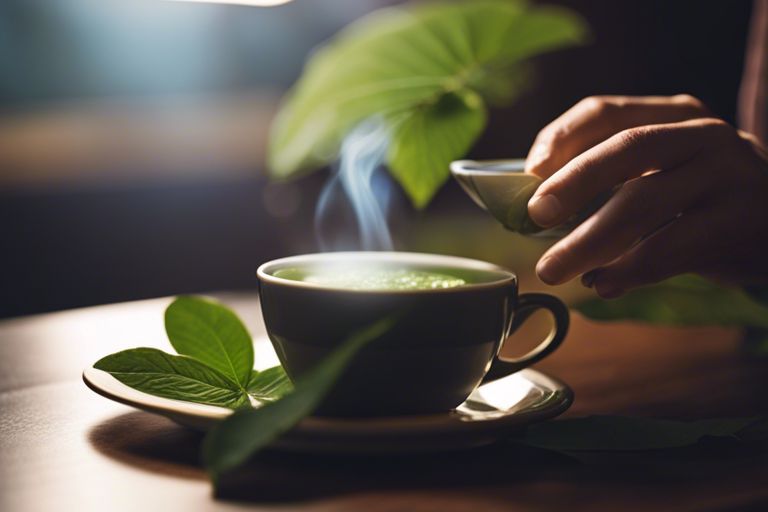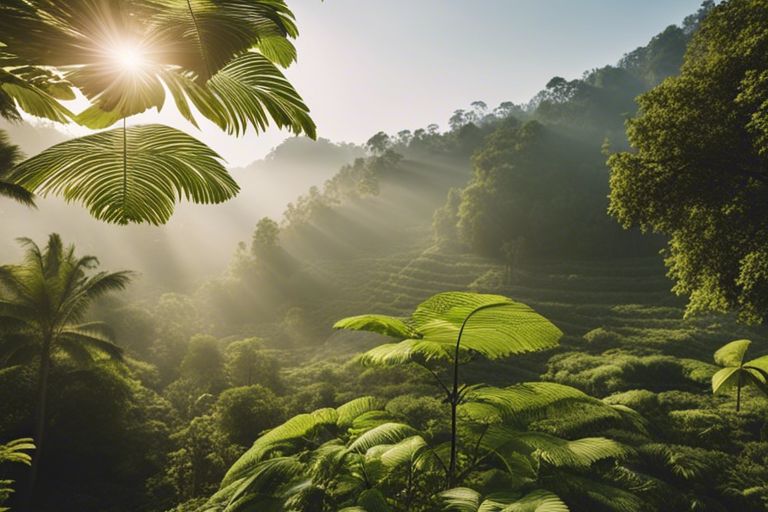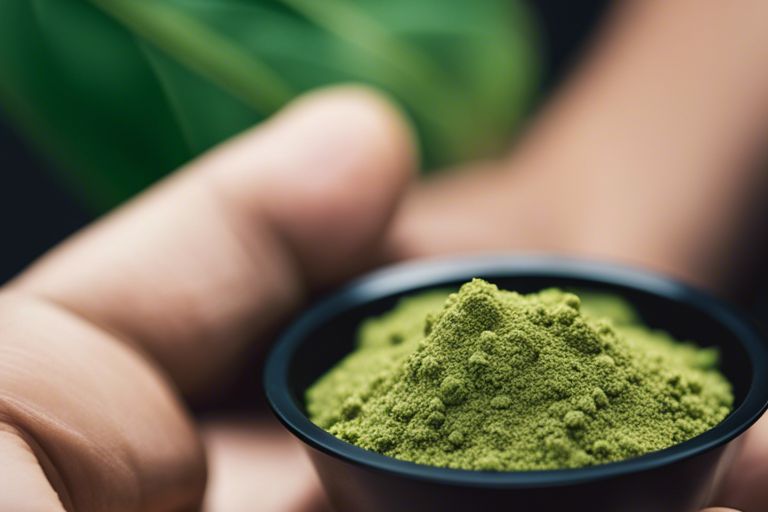There’s a mysterious plant originating from Southeast Asia that has garnered both praise and controversy for its potent effects. Kratom, derived from the Mitragyna speciosa tree, is harvested in countries like Thailand, Indonesia, Malaysia, and Papua New Guinea. Its natural compounds interact with the body in unique ways, leading to its use in traditional medicine and recreation. However, issues such as legality and potential risks have brought attention to the source of this intriguing botanical substance.
Key Takeaways:
- Kratom is native to Southeast Asia: Kratom comes from the leaves of the Mitragyna speciosa tree, which is indigenous to countries like Thailand, Indonesia, Malaysia, and Papua New Guinea.
- Diverse habitats for kratom cultivation: Kratom grows naturally in various environments ranging from rainforests to dry regions, showing adaptability to different conditions.
- Cultural significance of kratom: In Southeast Asia, kratom has been traditionally used for centuries in religious ceremonies, social gatherings, and as a medicinal herb, highlighting its cultural importance.
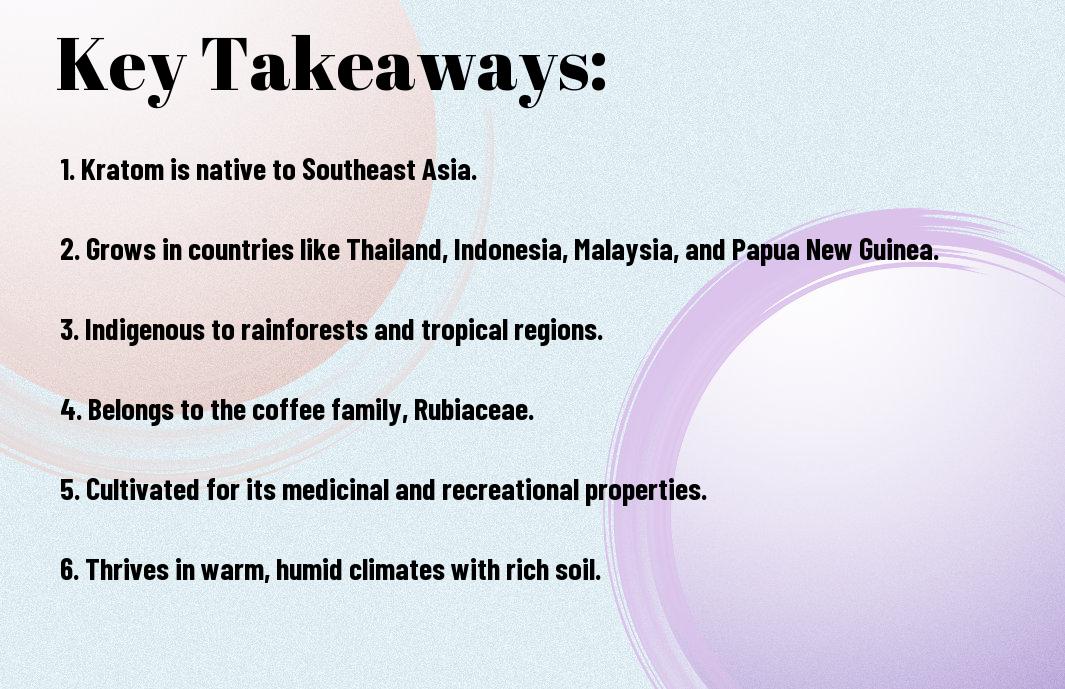
Origins of Kratom
Historical Background
The use of kratom dates back centuries in Southeast Asia, where it was traditionally consumed by chewing the fresh leaves or brewing them into a tea. Kratom has deep cultural and medicinal roots in countries like Thailand, Malaysia, Indonesia, and Papua New Guinea. It was often used by manual laborers to combat fatigue and increase productivity.
Southeast Asian Roots
With its origins in Southeast Asia, kratom comes from the tropical evergreen tree, Mitragyna speciosa, which is native to countries like Indonesia and Thailand. The tree is part of the coffee family and is known for its opioid-like effects. In Southeast Asia, kratom has been used for its stimulant and pain-relief properties, with different strains of kratom producing varying effects.
Asian cultures have long valued kratom for its potential therapeutic benefits, including pain relief, mood enhancement, and increased energy. However, it is crucial to note that while kratom can offer these positive effects, misuse or overconsumption can lead to dependence and adverse side effects. Understanding the cultural and historical context of kratom’s origins can provide insight into its traditional uses and potential risks.
Geography of Kratom Production
One of the most crucial aspects of understanding where kratom comes from is recognizing the geography of its production. Kratom is primarily cultivated in Southeast Asia, where the climate and soil conditions are ideal for its growth. The countries that are known for growing kratom include Indonesia, Malaysia, Thailand, and Papua New Guinea.
Countries Where Kratom is Grown
One of the primary countries where kratom is grown is Indonesia, particularly in the regions of Borneo and Sumatra. These areas provide the perfect environment for kratom trees to thrive due to their rich soil and humid climate. Malaysia is another significant producer of kratom, with the Malaysian strains being highly sought after for their unique properties. In Thailand, kratom has a long history of traditional use, and it continues to be cultivated in certain regions despite legal restrictions. Additionally, Papua New Guinea has also emerged as a source of high-quality kratom in recent years.
Ideal Climate and Soil Conditions
Kratom trees require specific climate and soil conditions to flourish. They thrive in tropical climates with high humidity and abundant rainfall. The soil should be well-draining and rich in nutrients to support the growth of healthy kratom trees.
It is vital to note that the delicate balance of these environmental factors directly impacts the alkaloid content and overall quality of the kratom leaves. Therefore, regions with the optimal conditions are more likely to produce high-quality kratom with potent effects.
Major Kratom-Producing Countries
Now, when exploring the origins of kratom production, it is crucial to understand the key countries that cultivate this botanical plant. According to Kratom: Uses, Side Effects, and Safety Issues, the top three kratom-producing countries are Indonesia, Malaysia, and Thailand.
Indonesia: The Largest Producer
One of the significant contributors to the global kratom supply is Indonesia. The country is renowned for its vast kratom plantations and diverse kratom strains. Indonesian strains are highly sought after by kratom enthusiasts worldwide due to their potent alkaloid profiles and unique aromas. The tropical climate and fertile soil in regions like Borneo and Sumatra provide optimal conditions for kratom cultivation, resulting in high-quality products.
Malaysia: A Close Second
With a significant presence in the kratom market, Malaysia is another vital player among kratom-producing nations. Malaysian kratom is known for its distinct properties, with strains like Green Malay and Red Malay gaining popularity for their balanced effects and rich alkaloid content. Malaysian kratom plantations adhere to strict cultivation practices to maintain quality and potency, ensuring a steady supply of premium kratom products for consumers worldwide.
Understanding the significance of Malaysia as a kratom producer highlights the country’s commitment to sustainable harvesting methods and quality control measures. By prioritizing these aspects, Malaysia continues to be a key player in the global kratom industry, offering a diverse range of kratom strains that cater to varying preferences and needs.
Thailand: A Rich History of Kratom Use
Thailand has a longstanding history of kratom consumption, with the plant deeply rooted in the country’s cultural and traditional practices. While kratom was initially banned in Thailand in 1943, recent legislative changes have allowed for its controlled medicinal and recreational use. Thai kratom strains are revered for their potency and unique effects, with varieties like Maeng Da and Thai Red Vein being highly regarded in the kratom community.
Thailand’s rich heritage of kratom use underscores the plant’s cultural significance and therapeutic value within the country. As Thailand embraces kratom within a regulated framework, the future of kratom production and consumption in the region shows promising developments that respect both tradition and modern standards.
Regional Variations of Kratom
After learning about the FDA’s concerns about kratom’s safety, as outlined by the FDA and Kratom, let’s research into regional variations that affect the characteristics and quality of kratom.
Different Strains and Their Characteristics
Kratom comes in a variety of strains, each originating from different regions like Bali, Borneo, Maeng Da, and Thai. These strains have unique properties and effects, such as Maeng Da being known for its energizing effects, while Bali is recognized for its relaxation properties. Understanding the specific characteristics of each strain can help consumers choose the most suitable option for their needs.
Effects of Climate and Soil on Kratom Quality
Regional variations in climate and soil play a crucial role in determining the quality of kratom. The alkaloid content, which is responsible for kratom’s effects, can differ based on where the plant is grown. For example, kratom grown in the lush forests of Borneo may have a higher concentration of alkaloids compared to those from other regions. Additionally, the climate can impact the plant’s growth, leading to variations in potency and overall quality.
Another important factor affecting kratom quality is the soil composition in which the plant is cultivated. High-quality kratom thrives in nutrient-rich soil, absorbing important minerals that contribute to its potency. Regions with fertile soil can produce kratom with enhanced effects and a more robust profile.
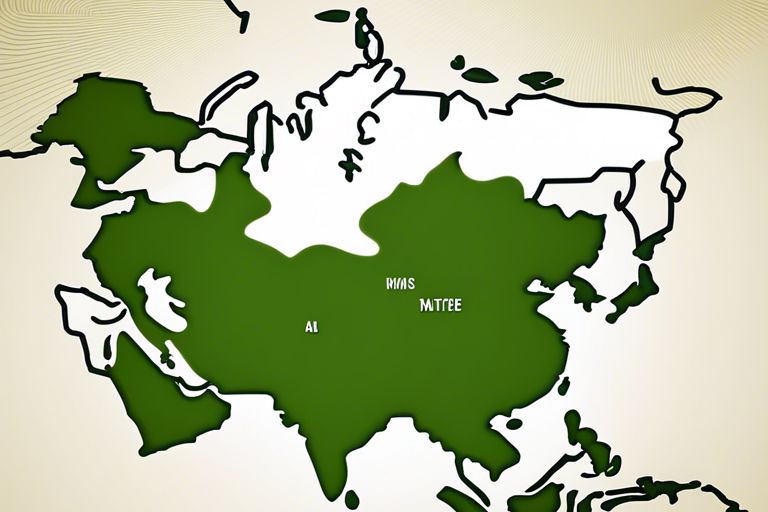
Traditional Use and Cultural Significance
Kratom in Southeast Asian Folk Medicine
All across Southeast Asia, kratom has been used for centuries in traditional folk medicine. Kratom leaves are known for their stimulant effects, similar to coffee, as well as their ability to alleviate pain and enhance mood. In countries like Thailand, Malaysia, and Indonesia, locals have utilized kratom as a natural remedy for various ailments, including diarrhea, muscle aches, and fatigue.
Social and Religious Significance of Kratom
To the people of Southeast Asia, kratom holds a unique cultural and religious significance. It is often used in social gatherings and religious ceremonies, where it is believed to promote a sense of communal bonding and spiritual connection. Kratom has also been utilized in traditional rituals as a way to connect with ancestors and the spiritual world.
The consumption of kratom is deeply ingrained in the social fabric of Southeast Asian communities, where it plays a vital role in fostering relationships and promoting cultural traditions. However, it is important to note that despite its cultural significance, kratom can also have negative effects if consumed irresponsibly or in excessive amounts.
Cultural traditions surrounding kratom highlight the plant’s diverse uses and the deep-rooted connections it has within Southeast Asian societies. Whether used for medicinal purposes or in religious ceremonies, kratom continues to play a central role in the lives of many individuals in the region.
What is the Relationship Between Kratom’s Origin and its Legal Status in Thailand?
Kratom’s origin in Thailand dates back centuries, where it was used as a traditional medicine and cultural herb. However, due to concerns about its misuse and abuse, the kratom legality in thailand was banned in 1943. Despite this, there have been recent discussions about potentially legalizing its use for medical and research purposes.
Modern Kratom Industry
Many factors have influenced the modern kratom industry, shaping its trajectory and growth over recent years. As the demand for kratom has surged globally, especially in Western countries, the industry has expanded to meet this growing market. With increased awareness about kratom’s potential benefits, more users are turning to this natural substance for various reasons, ranging from pain relief to mood enhancement.
Global Demand and Trade
Global interest in kratom has led to a significant increase in its production and trade on an international scale. Countries like Indonesia, Malaysia, and Thailand have become major players in the kratom industry, exporting the plant to meet the rising demand. The global trade of kratom has sparked debates over regulations and quality control measures to ensure the safety and efficacy of products reaching consumers worldwide.
Challenges and Controversies in the Industry
For those in the kratom industry, navigating challenges and controversies has become a regular part of doing business. Issues such as regulatory hurdles, inconsistent quality standards, and misinformation about kratom have presented obstacles to companies and consumers alike. Despite its growing popularity, kratom continues to face scrutiny from government agencies and health authorities, impacting its legal status and public perception.
Trade practices within the industry have also come under scrutiny, with reports of unethical sourcing and inadequate testing procedures potentially putting consumers at risk. It is important for companies involved in the kratom trade to prioritize transparency, quality control, and responsible sourcing to ensure the long-term sustainability and legitimacy of the industry.
Summing up
Upon reflecting on the origins of kratom, it is fascinating to learn about the Southeast Asian regions where this plant grows naturally and has been used for centuries. With a diverse range of strains and effects, kratom has a rich cultural history intertwined with traditional practices and beliefs.
Furthermore, understanding the origins of kratom sheds light on the importance of sustainable harvesting practices and preserving the natural habitats where this plant thrives. As interest in kratom grows globally, it is vital to appreciate and respect its origins while also promoting responsible use and cultivation methods for the future.
How Does Kratom Affect Heart Rate, and Where Does Kratom Come From?
Kratom’s effects on heart rate are a topic of concern for many users. Kratom is a tropical tree native to Southeast Asia, specifically Thailand, Indonesia, and Malaysia. The leaves of the kratom tree contain compounds that can affect the cardiovascular system, leading to changes in heart rate and blood pressure.
FAQ
Q: What is kratom?
A: Kratom is a tropical evergreen tree native to Southeast Asia, belonging to the coffee family.
Q: Where does kratom come from?
A: Kratom originates from countries such as Thailand, Indonesia, Malaysia, Papua New Guinea, and Myanmar.
Q: How is kratom traditionally consumed?
A: In its native regions, kratom leaves are often chewed fresh or dried and brewed into a tea for their stimulant and sedative effects.
Q: What are the active compounds in kratom?
A: Kratom contains two main active compounds, mitragynine and 7-hydroxymitragynine, which interact with opioid receptors in the brain to produce its effects.
Q: Is kratom legal in the United States?
A: The legal status of kratom in the United States varies by state, with some states banning its sale and use, while others allow it for medicinal or recreational purposes.


